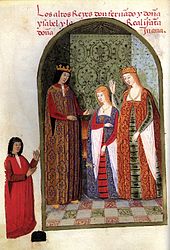Joanna of Castile, Queen of Spain, Spanish history, Habsburg dynasty, Spanish monarchy, biography, mental illness, marriage, legacy, Ferdinand of Aragon, Isabella of Castile, Joanna the Mad, Golden Age of Spain
Introduction
Joanna of Castile, also known as Joanna the Mad, remains one of the most intriguing and tragic figures in Spanish history. As the daughter of Isabella of Castile and Ferdinand of Aragon, Joanna inherited a powerful legacy but ultimately succumbed to the pressures of royal duty and family politics. In this article, we delve into the life, reign, and legacy of Joanna of Castile, shedding light on her struggles with mental illness and the impact of her tumultuous reign on Spanish history.
Early Life and Marriage
Born on November 6, 1479, Joanna was the third child of Isabella of Castile and Ferdinand of Aragon, the Catholic Monarchs who unified Spain and sponsored the voyages of Christopher Columbus. From a young age, Joanna was groomed for a dynastic marriage that would strengthen the alliances of the Spanish monarchy.
In 1496, Joanna married Philip the Handsome, the Duke of Burgundy and heir to the Habsburg dynasty. The marriage was politically advantageous but marked by personal turmoil, as Philip’s philandering and infidelity caused Joanna considerable distress. Despite their troubled relationship, Joanna bore six children, including the future Holy Roman Emperor, Charles V.
Struggles with Mental Illness
Joanna’s mental health began to deteriorate following the death of her beloved mother, Isabella of Castile, in 1504. Overwhelmed by grief and the pressures of royal life, Joanna experienced episodes of depression, paranoia, and delusions, leading to her confinement and isolation by her husband and advisors.
Despite her obvious distress, Joanna’s mental illness was exploited by her father and her son, who sought to gain control of her inheritance and assert their own authority over the Spanish monarchy. Joanna’s confinement became a political tool in the power struggles of the Habsburg dynasty, as rival factions vied for control of her fortune and influence.
Read Also: The Zhengde Emperor of China: Exploring the Reign of a Controversial Monarch
Reign and Abdication
In 1516, upon the death of her father, Ferdinand of Aragon, Joanna became the Queen of Castile and co-ruler of Spain alongside her son, Charles V. However, her reign was overshadowed by her mental illness and the machinations of her advisors, who sought to govern in her stead.
In 1555, Joanna was officially declared incapacitated and removed from power, paving the way for her son to assume sole control of the Spanish monarchy. She spent the remaining years of her life in seclusion, confined to various castles and convents throughout Spain, where she was cared for by loyal attendants and servants.
Legacy and Historical Assessment
Joanna of Castile’s reign is often overshadowed by her struggles with mental illness and the political intrigues of her family. Despite her initial promise as a ruler and her role in shaping the destiny of Spain, Joanna’s legacy is tinged with tragedy and missed opportunities.
However, Joanna’s tragic story has captured the imagination of historians and artists alike, inspiring numerous literary and artistic depictions of her life and reign. Her struggles with mental illness have also sparked debates among scholars about the treatment of mental health in the medieval and early modern periods, shedding light on the intersection of power, gender, and mental illness in European history.

